Load from PC
How can a CFO & Ops Head Reduce Labour Costs-24Aug
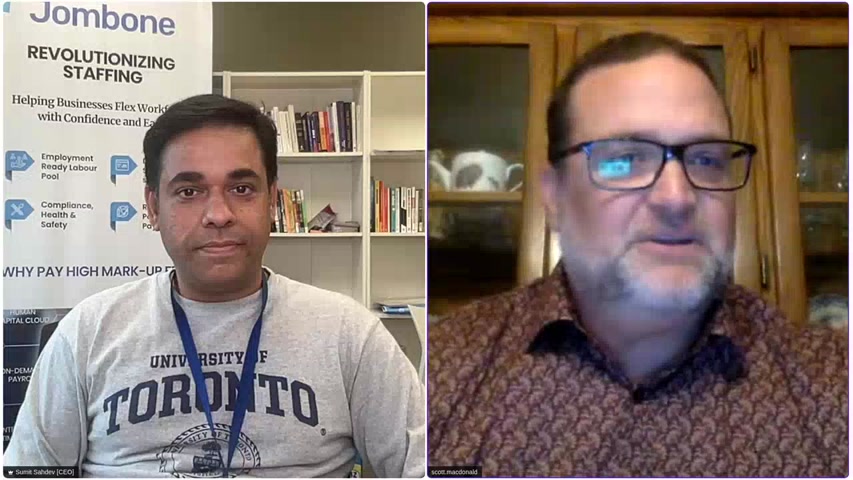
Yep .
Hello everybody .
Hi , Scott .
Nice to see you .
Hi , Summit , how are you ?
Fine , thank you .
Good , good .
So , Gang , thanks for joining us .
Um I just want to uh just cover a couple topics today .
Um And obviously we saw the webinar and what it's gonna be uh how can a CFO and s uh head reduced labor costs ?
But first , uh my name is Scott mcdonald , uh regional sales Manager for Ontario for John Bone .
And uh with that , I'll let Summit you can introduce yourself and then uh we'll get into the uh the , the questions .
Absolutely , Scott .
Thank you very much .
It's good to have you .
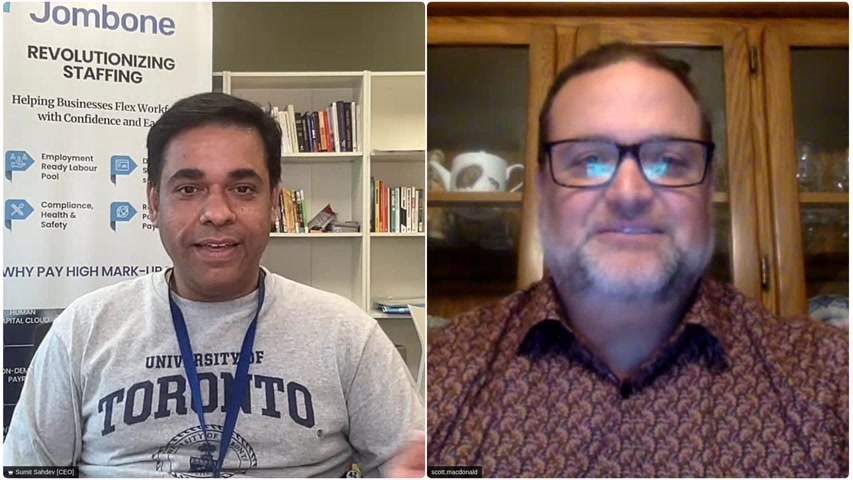
This is uh this is my , I think fourth or fifth webinar and it's looks , it's uh nice to , I , you know , welcome you here and I , so this webinar was originally planned uh for one of our colleagues to , to host Eddie .
Uh but he's busy in another meeting right now , so I just thought to uh cover , cover him up and looking forward for this conversation .
So , yes .
No , for sure .
So I guess first off summit , um I , I'd like to talk a bit about uh you know , labor reduction , uh , labor costs and , um , how , uh , in general digital staffing can help a CFO or an OPS head .
Um , if you can just touch base on that for a bit .
Absolutely .
I think , uh , so Scott , so this topic is one of the most , uh , under touched or under looked topic , you know , from a finance standpoint .

Uh , oftentimes what happens is , you know , when , when , as a business you are looking to , uh , hire workers , you know , the only thing that you care about is ok , let's find some people and because we need people to be able to run our business so that we can deliver the promise that we made to our customers .
So I think , you know , the primary business objective for any business is to get the job done and which is where businesses once they have hired or found , found , uh , you know , those people who would work for them , you know , at certain point after they have found those people that where , you know , they , they slowly start to then care about , uh , you know , what , how much we are paying , whether we are getting enough value , you know , out of those of those people are we able to deliver value to our end customers as well .
I think , you know , from a , from a , from a finance and an operation standpoint , you know , so these kind of metrics becomes extremely important to know .
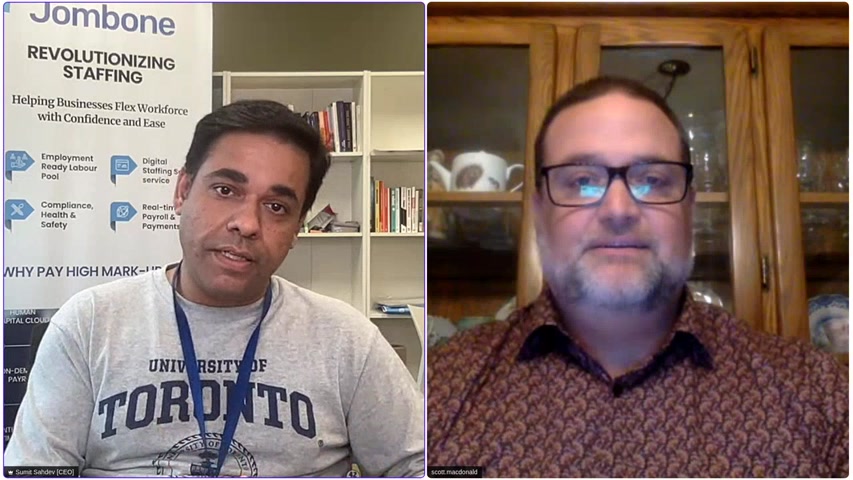
For example , if my business hires , uh , 10 people or 50 people or 100 people .
Sometimes businesses hire people on a temporary basis for some businesses .
It is a temporary to a permanent hiring strategy , but everything rolls up to the business value that you're trying to generate .
So as a business , once those workers are being hired , you know , they become the part of their , you could call like the operating uh , expense , whether they are hired by , by that business on their own payroll , then it becomes wages expenses .
But , uh , but other times when these workers are hired on a contingent or a temporary basis , then they become kind of operating expenses which is not related to wages .
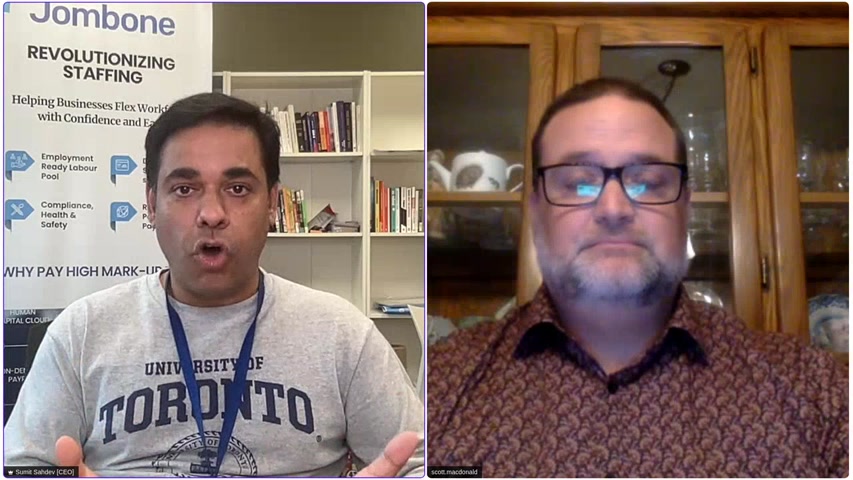
And that's where the CFO S and operations people , they really care about making sure that , that operating expense line item , whether it is wage or , you know , operating expenses , they are able to , uh , you know , basically take that cost into account to see business sustainability because at the end of the day , it is a cost and that cost needs to be a sustainable business back to whatever business , uh , you know , you know , a particular business is in .
So I think , uh , eventually to answer your question , Scott , I think initially people care about finding people , but then eventually , once they have found people , they , they , they , they throw them into the business process of getting the job done , then they get back into and , and understanding whether it is a , a sustainable cost that can really help their business .
And I think that's the view , you know , that most CFO S and operations head sooner or later , you know , realize uh in the life cycle of their business .

So you touched base on the CFO and the OPS and what I do find intriguing is especially being on the road .
Uh , and in my career meeting with CFO S as well as uh S heads .
Um , you are correct , you speak to somebody in OPS and it's , I want a body .
Um , and so you kind of scratch your head because , you know , in about 34 months then it's , uh , well , we have too much overhead here , we have too many people .
Uh , we have to , you know , cut the costs here somewhere .
Um , the CFO is basically spoken to us about it and , and then it's reversed .
So it's the equal balance , I think .
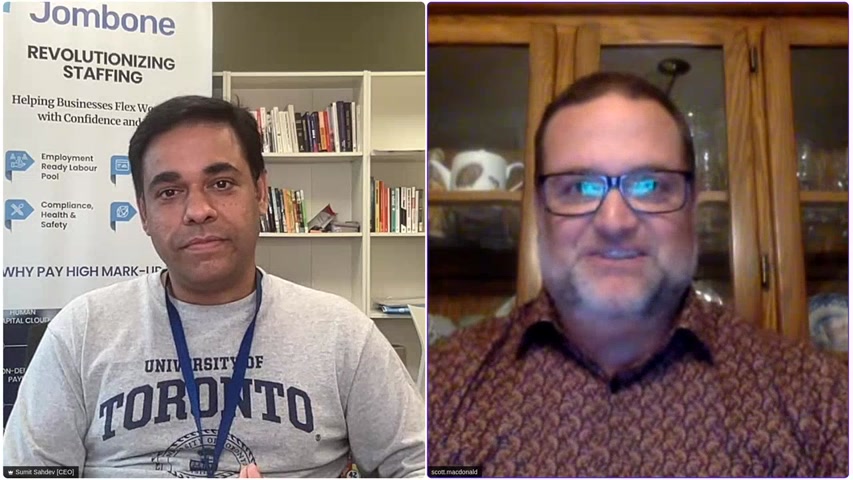
And that's what I'd like to have you touch base on is , you know , why does a CFO care so much , um , you know , compared to , uh , pretty much while everybody else that's , um , you know , on the floor that just has to pump out all of the product .
Absolutely .
So , you know , you know , talking looking at a business , uh from the financial lens , which is , you have your top line , your cost of good sales gives you the gross profit margins .
You have the operating expenses , which then gives you your operating revenue , which is your .
So I think , you know , the the you know , the finance people , they look at the entire business from an income statement , you know , standpoint at the end of the day when you are operating a business and you are managing finances of that business .
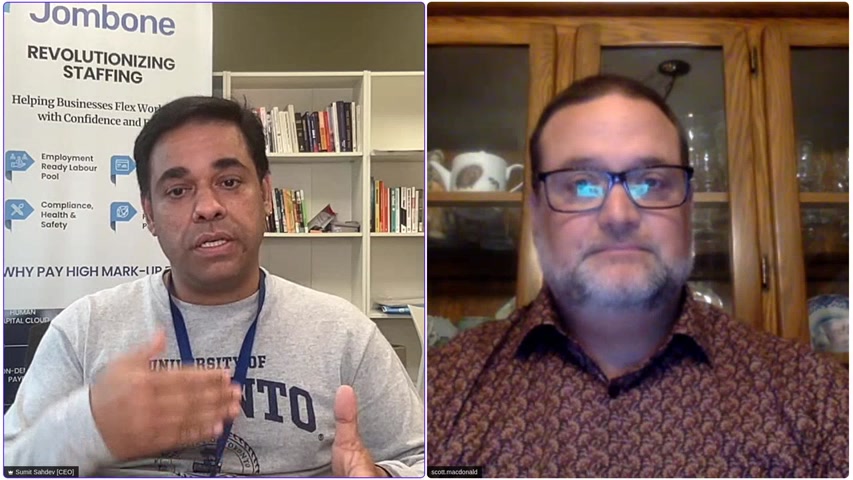
So the first thing as a finance person I care about is whether my business is returning a net positive dollar on the bottom blind .
Now , businesses may invest in different stages of the life cycle of the company .
But finance people do do you know , take this this factor into account that whether it is a profitable and a sustainable business or not .
And in order to do that , the reason they care about because they are eventually are responsible for first of all managing those financials .
But at the same time , also be able to deliver a positive financial results , which is also uh which also includes managing a healthy cash flow .
So for for those purposes , these finance people , you know , they are very much concerned about making sure that they have budgets in place and those the spend with respect to those budgets are based on the forecast that they had at the start of the year .
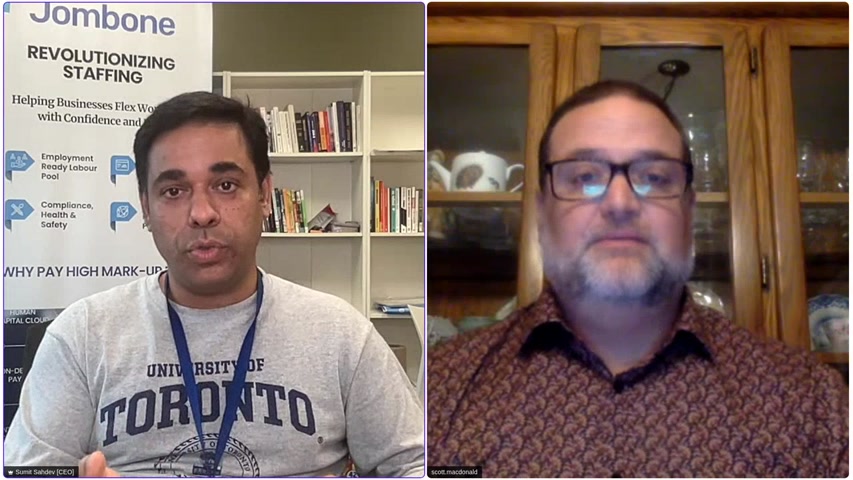
So I think , you know , just like any finance or ops business , you know , it is extremely important that if you have budgeted to spend X , which is gonna give you the corresponding Y as a revenue result So if you are receiving , if you are receiving the revenue results , are you within budgets or not ?
And oftentimes what happens is businesses , they do not have real time visibility into the , the expenses they are making because most of most of the times when you're making expenses , you're waiting for that end of month , end of quarter to really give you the results , you know , that you need to know to be able to be able to make those decisions .
So I think , you know , from a , from a , from a finance officer or an ops head standpoint .
So uh making sure that the business that I'm operating is running within the budgets and without over shooting budgets one quarter over the other , then you'll be playing the catch up game .
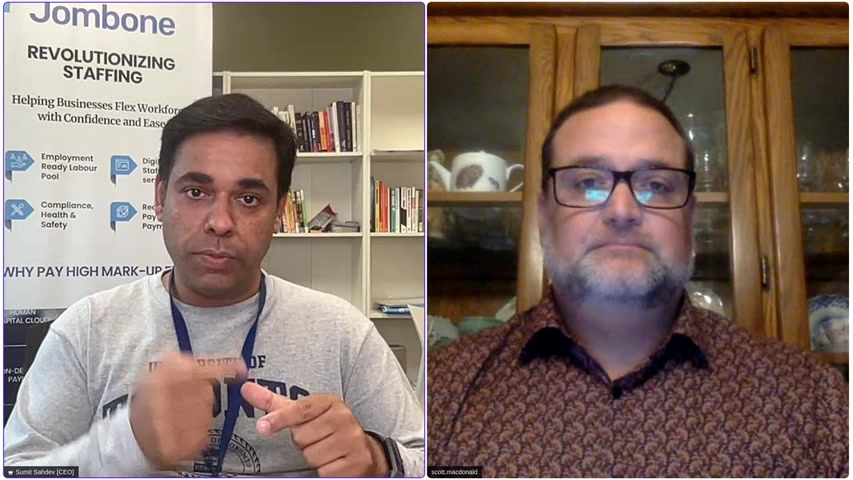
I think maintaining those budgets , delivering budgets , delivering results within those budgets and also ensuring that the overall sustainability of a business , not just from a net dollar retention standpoint , but also from a cash flow standpoint .
It becomes extremely important for businesses to be kind of fully aware of .
And I think that is the reason uh you know , these finance people and the operations , uh you know , managers and director level people , they do care about this because it is directly related to whether a business is going to be sustainable or not sustainable .
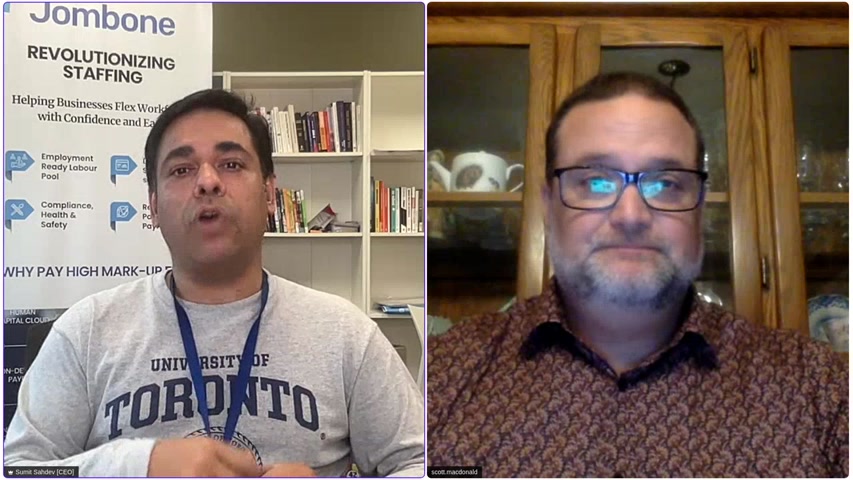
So I think that's why , you know , uh uh uh these professionals do care about , about this and then talking one step more deep into this , which is , you know , a business will have different cost components , you will have sales cost , you will have marketing cost , you'll have , if you are a manufacturing company , you would have production cost or you would have different forms of cost heads .
But one thing that we have noticed is that each business , regardless of the industry will have a significant amount of human capital costs .
Whether it is sales , marketing , manufacturing delivery fulfillment , whatever that is , there's , there's always a significant amount and , and there are , and it is , and it is driven by regulatory frameworks also .
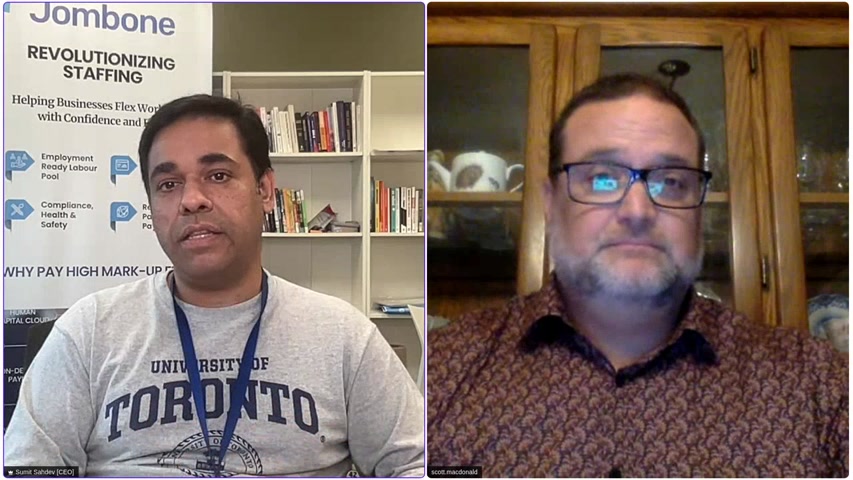
And I think , which is , which is why human capital being one of the biggest cost components , which is directly attributed and related to the business performance and health of the business is the reason that these uh uh professionals do care about uh making sure that the costs and all those elements are well within the budgets .
Definitely .
Um So it , it , to me personally , it'll always come down to cost um you know , and quality of , of , you know , for example , the , the the staff that's put in to help the team .
So it helps out with retention .
Um in saying that , you know , we're in a world that has changed in , in the recruitment world .
It's , it's , it's a new world .
Um a new world of digital staffing .
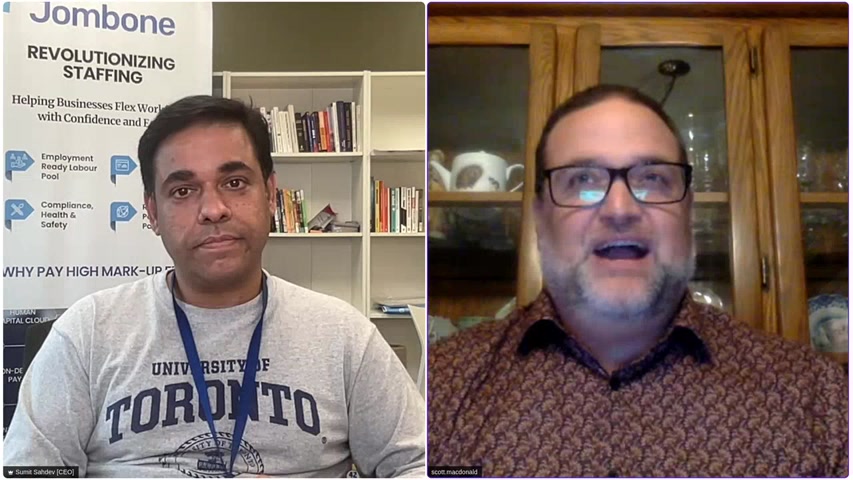
Um You know , how does digital staffing come into play when uh in , in streamlining um , you know , we've been on calls before where , you know , we could sit there and talk to the manager .
The ops manager is , that's great .
You can do all this , but , you know , we need track and trace , we need everything else .
Um , can we touch base a little bit on , on those topics on , on digital staffing and streamlining ?
Absolutely .
And I think one thing I would like to say here is we're not talking about staffing or hiring specifically about like an agency or anything .
Like we're generally saying that , you know , uh , from a , from a finance officers perspective standpoint , uh , it is very important to make the right decisions at the right time .
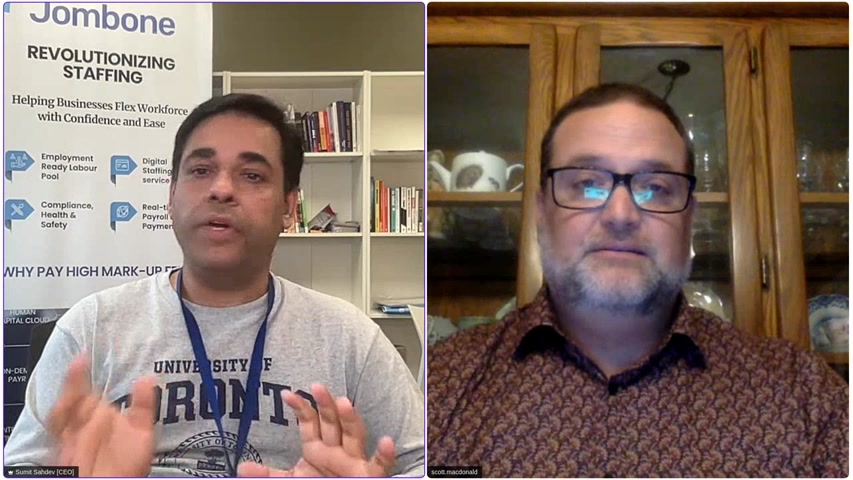
Now , if you are hiring internally , uh , employees , they are your full time employees or whether they are contractors or whatever , those are , those employees which are hired , they are required to be associated with some form of departmental cost .
Now , you could have department , one , let's say a retail department and you have hr department and you have services department .
So different people who work in different departments , they are tagged in different departments and that's where they fall into those ex those corresponding expense , uh , you know , expense , you know , by departments , for example .
So I think oftentimes we have seen that , uh , business owners CFO S said they have to manually track each and every person's time and material and cost , which for which they have spent that time now consider , you know , a scenario , one person working 50% for one department and 50% for another department .

And technically , you know , from a , from a profitability standpoint or from a real time , not real time , but realistic calculation standpoint , you would want that breakdown to happen equally between those two departments and all those reporting .
And all that data preparation is all done manually these days .
Even though there are sophisticated enterprise resource planning and hr Softwares which are used by businesses , even those , you know , those are there .
But when once you combine , you know , your hiring strategy , which is I want to hire permanently uh full time internally versus I wanted to use uh a temp staffing service provider for my temporary workers .
So , so managing and reporting with , with respect to the finance and the operating requirements of a business becomes extremely , extremely challenging and that's where a lot of time is spent .
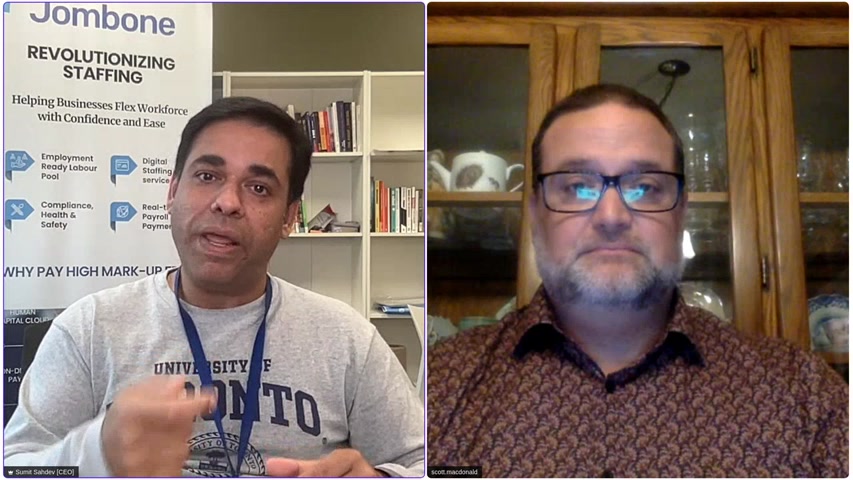
And I would say wasted because these days , uh you know , if you have the right infrastructure of capturing that information in place , then you are most likely doing it right at the at the get go .
So I think this is the first thing that I would like to touch here , which is that in the world of digital , which you talked about and human capital , you know , per se .
So there needs to be a mechanisms that would give you to classify your human capital expenses with visitor to whatever functional scheme that you have within your company to be able to say this is how I segregate my cost and this should happen real realistically in real time .
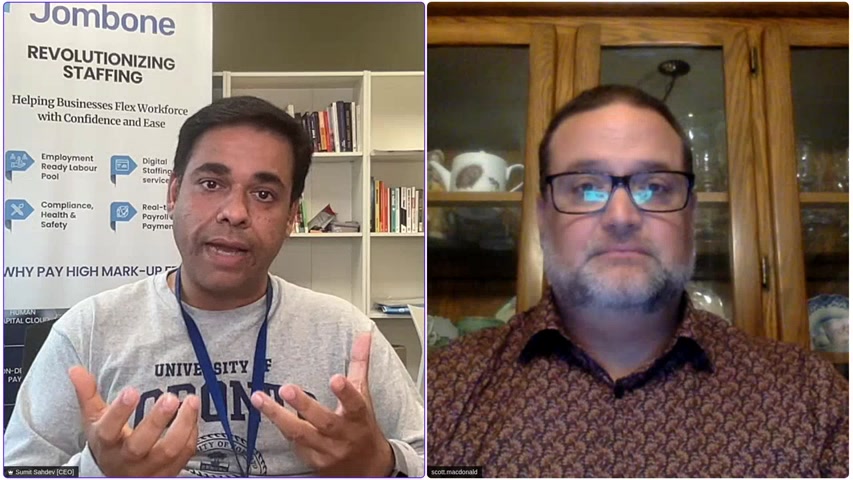
Now , as you move , as you hire people , uh especially if you are hiring in a very high uh peak uh hiring season , for example , then you know , then your your cost is gonna go up and then the corresponding management of those human capital costs are also required to be factored in .
So if you , if you use a digital solution from the Get Go , which gives you the complete transparency and visibility into uh you know , into your operating expense items as it relates to human capital cost .
And if you have classified them properly , that is going to give you that insight and power to be able to make those decisions in real time .
So if you have set those up properly using a digital solution , then you will then you will always know that whether you are running on budgets for certain business reasons .
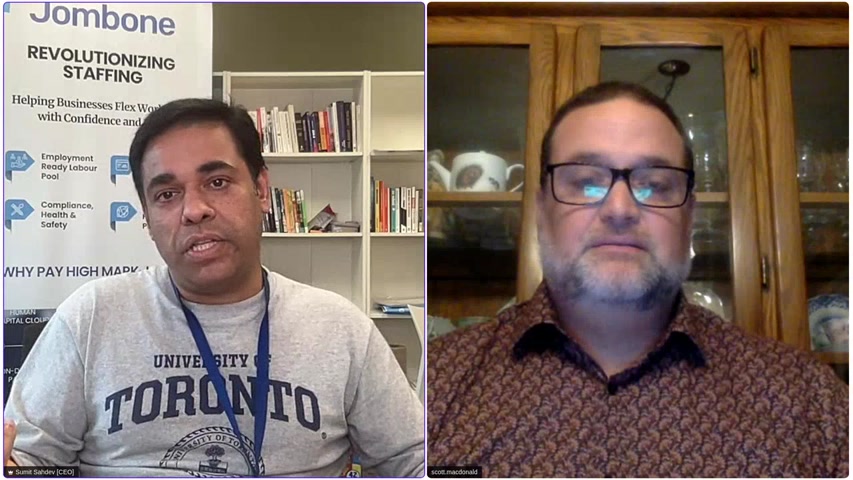
If you are even over budget for a certain week or a period , at least you will know that I need to uh get that balanced maybe in the next period or the next quarter .
So I think so the digital benefit as it relates to uh organizing and making sure that appropriate human capital cost elements are segregated at the Get go gives the ops people and the finance people , the real power to be able to make those decisions for hiring or not hiring .
Because at the end of the day , think about this , you you , so let's say you are budgeted to hire 100 people , for example , in this quarter and your business should produce , let's say $1 million of revenue .
Now , if the revenue is not produced , and if you continue to spend , you know , on human capital , which is one of your cost elements .
And if you will not know that in real time , you're always playing a catch up game .
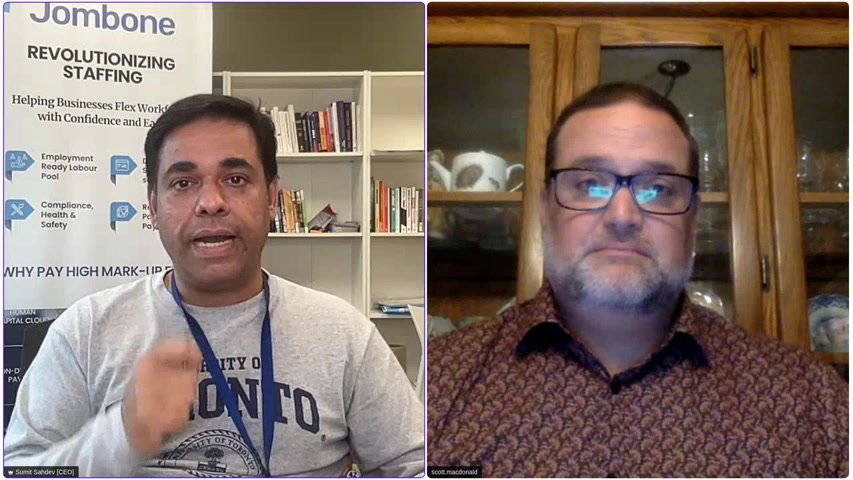
So I think , you know , digital now with the evolution of technology , I think getting real time insights into what is happening in my operations .
Uh I , I'm , I'm I'm talking , I'm only talking about human capital .
I'm not talking about other expenses that will be there in each business .
But , but you know , uh from a human capital standpoint , they exactly know how much did I budget and how much did I spend ?
How much am I left with ?
What can I do to cover cost ?
Sometimes there are use cases where uh you know , your business is running fine , you can deliver results without even , you know , using 100% of your budgets .
But then you are not obligated to spend those budgets also .
So giving you insights into , into your uh human capital operating expenses in real time will give you the power to be able to manage that .
And I think that's where digital kind of comes in uh really help uh businesses .

So which is , yeah , yeah , I mean , you , you , you mentioned in real time , I think every , every business I think we used the word a while ago about uh scalability .
Um I think that's , that's very important uh real time and scalability to make sure that , you know , your business is running smoothly on that aspect .
Um I , I do wanna touch base with CFO S and uh just my , my experience uh with contractual agreements , for example , um you know , I , I've , I've had uh heads of operations that have said , yeah , we want you , we want you and we've done follow up after follow up .
Uh Well , actually , it's been passed on um the CFO S going over the uh contractual agreement .
Um We've had some funny requests over the years .
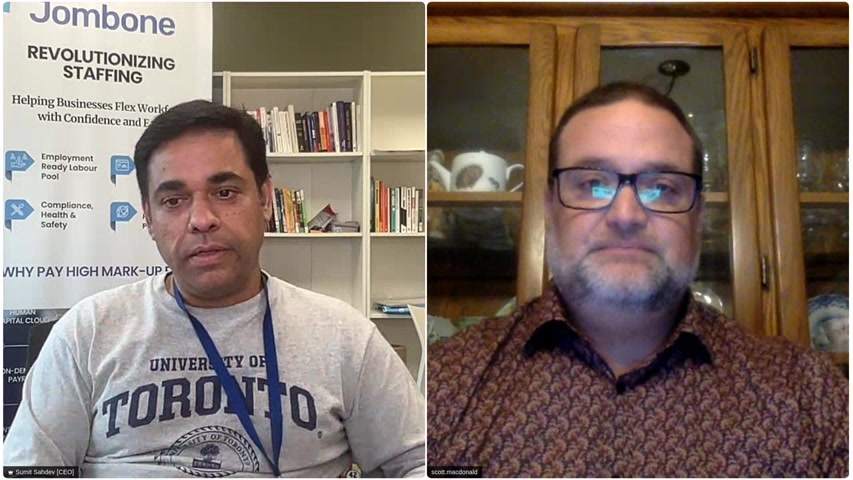
Um But um what is it with the CFO that they're , they're looking for exactly in that contractual agreement um to make things smoother and , and the contract smoother , you can touch base on that .
I think , I think , you know , from a , so let's say , looking at , let's say a contract or an agreement .
Uh the first and foremost thing which a finance person looks and care about is cost very simple , you know , what is the cost and how do I build a performer or how do I , you know , substantiate my existing forecast based on the cost that I , that I'm willing to pay right now .
So I think as a finance person , so uh staying uh conscious of the costs and bundling those costs into an operating model and a financial model is one of the first things that uh you know , CFO S do care about when they are looking at a contract .
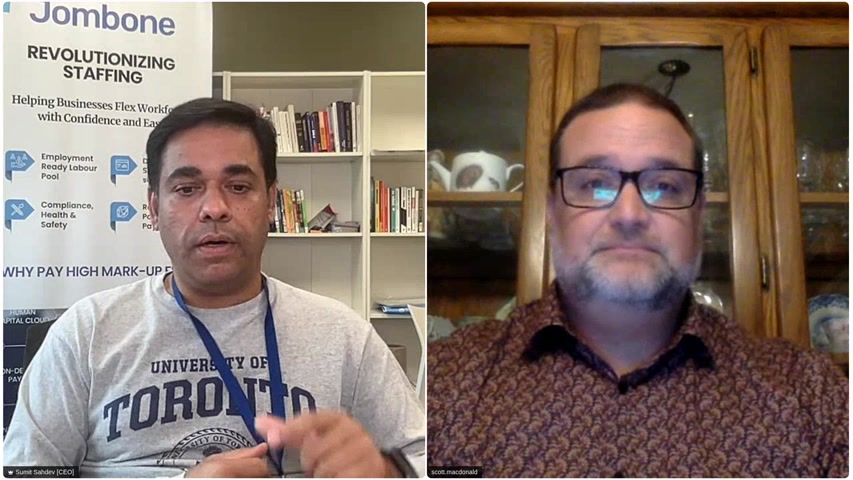
And , and that's where uh you know , we as John Bone , we also , we talk about uh you know , the intricacies of uh a change or a change in a rate and then how it can impact a particular operating model .
Uh We share that information with our prospects and customers as well .
So first point is cost , which is whether that those costs can be bundled bundled into my operating model from a sustainability standpoint .
Second thing you know CFO and S they look at uh from a cash flow standpoint , their business .
What are the cash flow working capital requirements that I have as a business now , uh oftentimes as a business I could say , OK , I need a 15 or a 13 day , 30 day net term , you know , on the invoice that is submitted to me or sometimes even more .
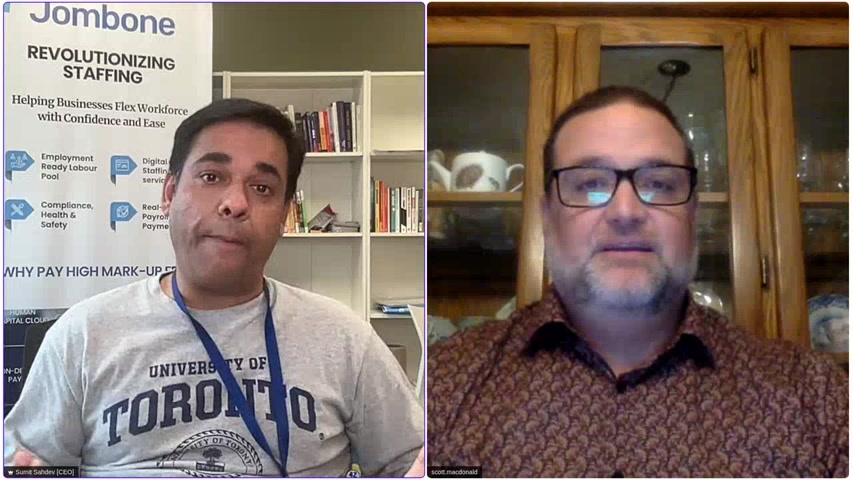
But then , you know , the cost of capital is usually bundled into the pricing that is given to a particular company .
So I think this is the second consideration , which is what are my , as a companies , what are my cash flow and my working capital considerations and whether this particular contract is giving me what I need because at the end of the day , a CFO saying I need a 15 , not 15 , but a 30 day net term is , is game of cash flow .
So they're just trying to make sure that , you know , their cash flow is balanced whatever number of vendors they have uh are they on similar net terms ?
So that administratively it is easier to be able to manage the process also .
And , and that's where CFO S uh look at cash , which is kind of the net terms .
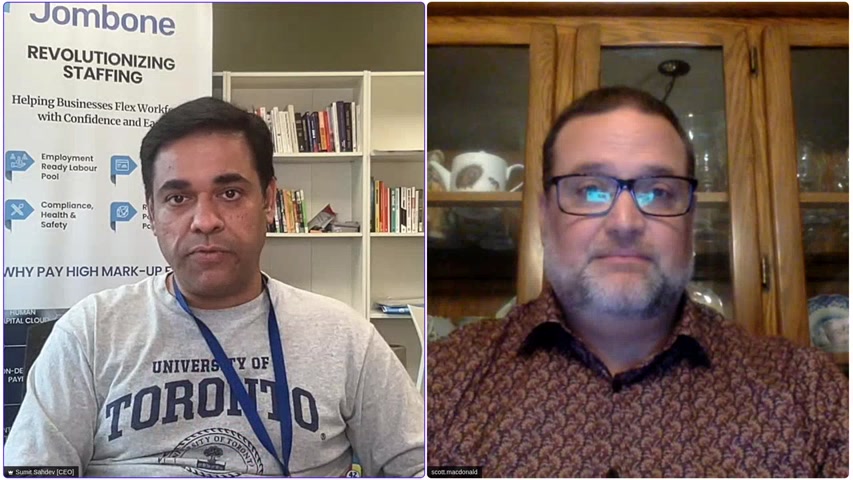
The third thing that uh CFO S and S looks look at is what are the other uh financial related obligations which is attributed to uh the delivery of a certain contracts performance .
For example , one is insurance requirements .
For example , do I do my business needs additional insurance ?
Do my business need an additional commercial general liability insurance or maybe any form of insurance that is needed based on the business that I am in and whether or how the risks that are associated with those insurance requirements , how they link back into my appetite for the cost that I'm looking to get ?

So if I say I get a higher cost and I get a very high , uh let's say insurance requirement that I need or which is not a need , actually , let's say it's a , it's a good to have then am I willing to pay that additional cost ?
And that's where based on the risk appetite of the insurance requirement as it relates to the contract is something that CFO S do uh take that into account .
So , getting a good insurance requirement , it's a good to have but is it adding to my cost if yes , is it absolutely mandatory that I need to have ?
You know , and , and , and I think that is one important operating concentration that both uh CFO S and upset people in collaboration with HR and procurement to be able to make that distinction .
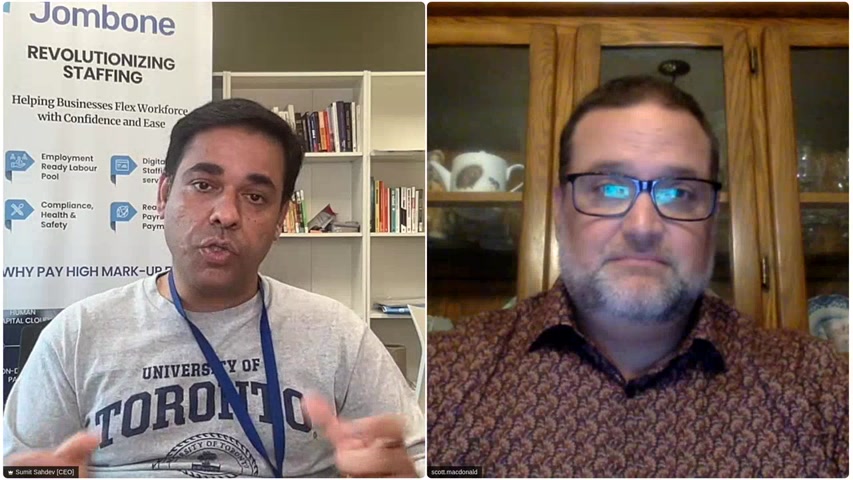
So I think so if you look at these , these three things that I mean , talked about one is cost , the working capital cash flow requirements and whether other financial uh performance that we need from the contract mostly related to uh insurance .
I think these are the three factors that finance team looks at it and the risks are associated with these kind of these kind of things as well .
So now think about this , if I'm a CFO and I want to keep my costs low and I need to make sure that whether I'm ok to accept a lower net term versus a 30 let's say a 30 day versus a 15 day or a 60 day versus a 30 day net term from a business .
So I think that that decision or that understanding , you know , is something that is very important from a finance standpoint to be able to make sure that it fits into the variable and the equation that we have .
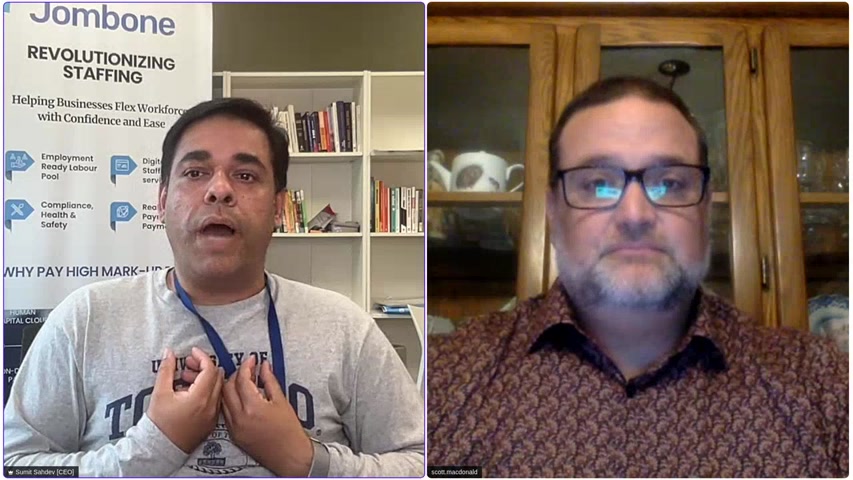
And that's where modern day digital uh solutions , which takes into account .
Let's say I , I'm a business and I need 30 day , for example .
And I know my invoices , let's say maximum $20,000 invoice .
I'm just saying .
So can I pay by a credit card and pay and save onto my cost ?
Because my credit card gives me that additional one month , one , you know , period 1 , 1.5 month period based on my billing cycle with them .
So I think there's some , there's some ways that business uh uh not business , I would say finance uh professionals and ops people , they are looking at alternate methods to be able to understand how and what I can do to be able to save costs , which is where , you know , these contracts are then reviewed .

And oftentimes also also see Scott like businesses , they just don't know uh whether they have these options which are available to them , which is I'm , I'm , I'm asking for a 30 day net term or a 60 day , 45 day net term .
And I'm paying 2% more on a monthly basis .
Now , 2% monthly cost when you compound that into an APR is equal to about 20 I think 26 or 27% of the , of the annual cost because it's , it's calculated on a compounded manner .
So I think that's where , you know , businesses , they , they , they , they don't know , what are the other digital alternate options that are available to , to , to them and then whether they can use that to be able to , uh , really , uh , uh solve their business problem .
Right .
So , I guess the question I have , um , and it's probably we're , we're getting down to the timeline there .

Um , we have been to clients before and those clients um discuss with us about uh cost and efficiency .
Is it fair to say that in our particular industry , there needs to be more of a uh an educating aspect to it when it comes to discussing .
Um it's not just a matter of , hey , I , I met with the ops head , um maybe it's time that there should be more of a um let's get OPS and the , the CFO together at the same time .
Um They can educate us a little bit on , on what their concerns are um as well as we can visually show them , you know , exactly uh what the solution is to what they're looking for at that time to kind of curve down the process and , and then the long dragged out process of contractual agreements and , and when they're gonna move forward .

Um So I guess my question would be um you know , next steps in a new industry that we talk about , is it fair to say that we should be looking at um bundling everyone together um to , to save on time and energy and everything else if you can just touch on that .
I think , I think , you know , one thing is , is certain that if you talk specifically about hiding and staffing industry , it has been antiquated for a very long time , which is a fact .
And uh and now the evolution of technology and the post COVID push to uh realizing the benefits which are presented by digital .
I think this is the first factor that is really making businesses really .
Now say , OK , OK , I see there are options available but I just need to understand them better .
So which is the 1st 1st perspective ?
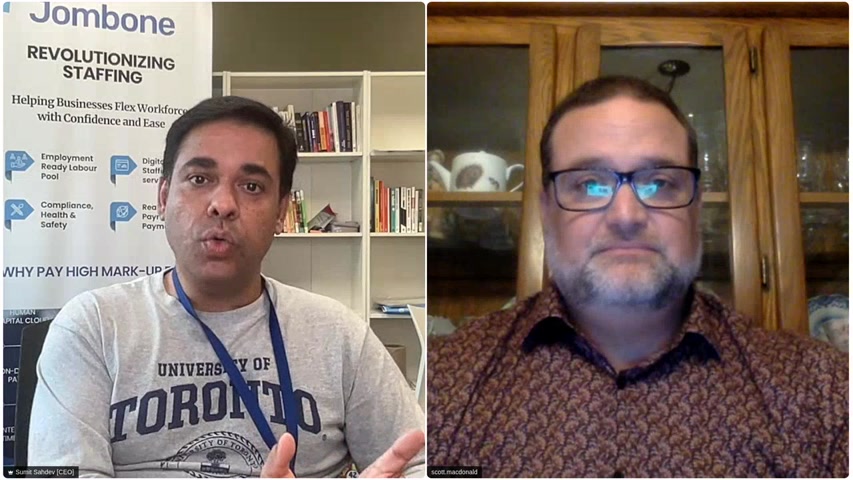
But then if you talk about generally like human capital as a cost , there are different stakeholders , you know , that are involved in the whole process .
So you have the business users who are looking to deliver the business results , they are most likely either operations people or business people .
Their first job is is to get human capital to be able to deliver whatever promise .
So they're there as a stakeholder , their perspective is finding people uh quality people making sure that they are hired and integrated into their , their company culture .
And once they are , once they do that , they're able to get the value out of them .
The second stakeholder comes , which is the human resources .
Do we have the right infrastructure in place to be able to on board ?
People , train people health and safety , the different uh you know uh perspectives that hr bring to the table which is related to the management of human capital .
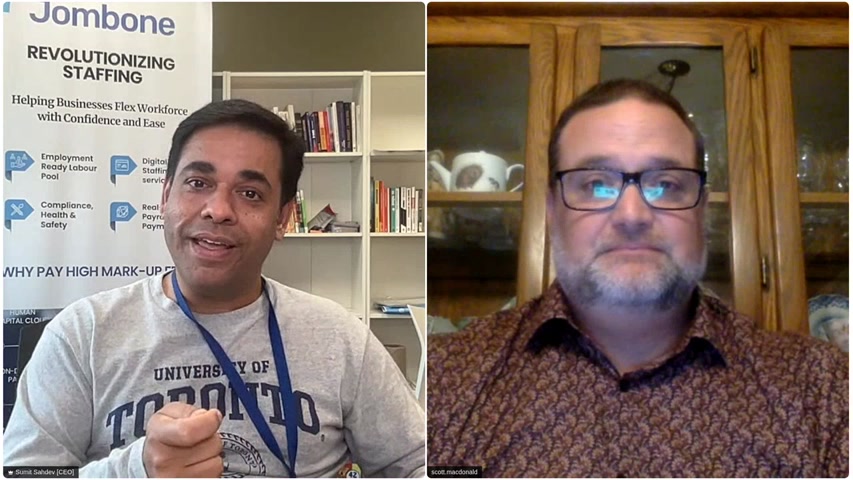
And then also hr then plugs itself , excuse me , that's you .
So hr then plugs itself into uh procurement where if you are getting a vendor , like what are the attributes that you would want to share with procurement ?
And then as hr you need to get that information from uh from your business users .
How are people doing ?
And are we letting somebody go ?
How is their performance ?
I think that's where the second stakeholder comes into picture , then comes the procurement which usually gets involved uh initial status and uh of , of , you know , signing up a customer , setting up the vendor so that everything is streamlined and then finance as an ongoing uh you know , stakeholder which which would need inputs from business to be able to ensure business , businesses , financial sustainability .
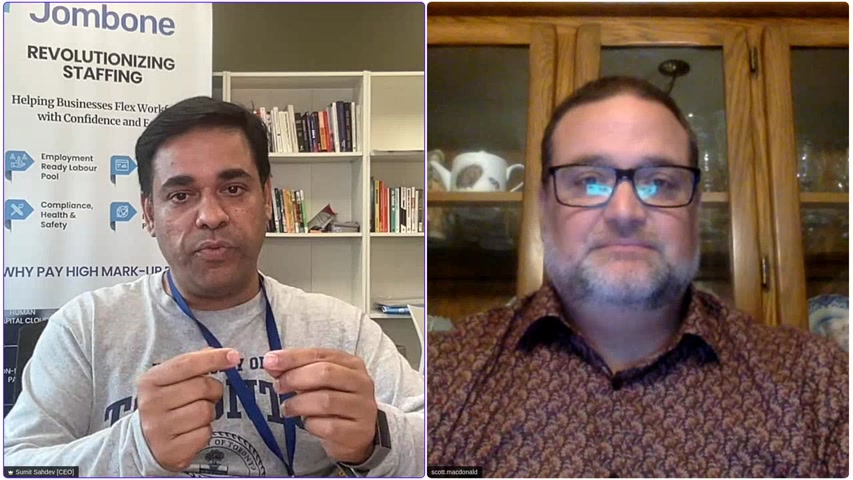
So if you look at this , so these four key components , business hr procurement and finance , all these four people need to talk to each other , you know , in a , in a very , you know , uh seamless manner , they should be able to exchange information in real time .
They should be able to talk about information without having to worry about uh you know , preparing spreadsheets and sharing with each other , normalizing data and whether it makes sense or not , then you get one data and all that is lost .
I think , I think this is where the future is going like is how do you connect all these stakeholders with , with a single process and with , with seamless exchange of information across functions .
And I think that is where the , the staffing and the hiring industry is going to rather than having a siloed implementation of a software which solves one department's need .
But this is a much more comprehensive uh aspect to that .
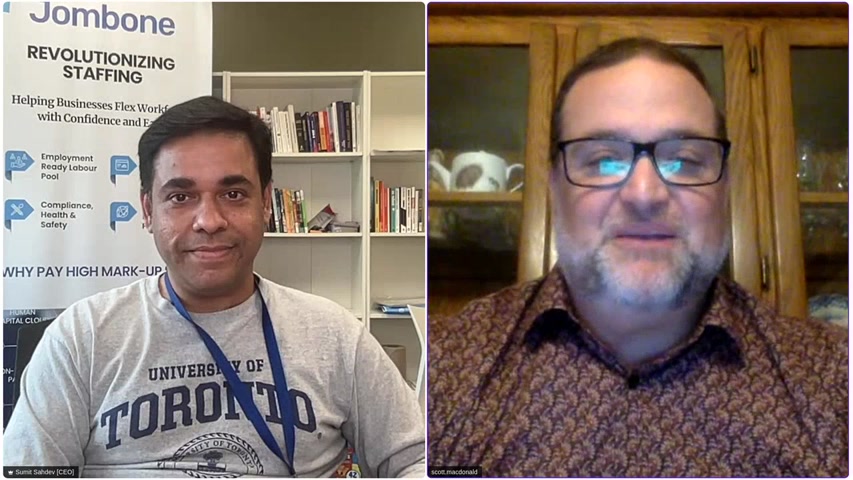
I 100% agree with you .
All right .
Well , first off , I'd like to say , thank you very much um for spending some time with us today .
Uh Thank everyone who's been online with us .
And uh definitely , if you do get a chance , take a look at uh John Boone dot com .
Uh I'd like to thank uh summit um once again for his time and once again , my name is Scott mcdonald Regional Sales Manager and I hope everybody has a great rest of the day .
Thanks for watching .
Absolutely , Scott .
Thank you for having and thank you for this session .
Bye-bye .
Thanks .
Are you looking for a way to reach a wider audience and get more views on your videos?
Our innovative video to text transcribing service can help you do just that.
We provide accurate transcriptions of your videos along with visual content that will help you attract new viewers and keep them engaged. Plus, our data analytics and ad campaign tools can help you monetize your content and maximize your revenue.
Let's partner up and take your video content to the next level!
Contact us today to learn more.